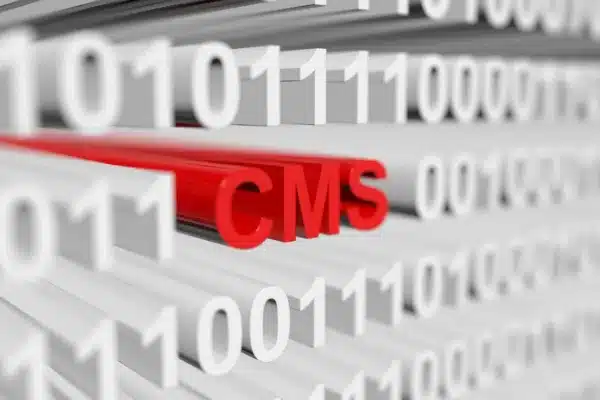You’ve worked incredibly hard to be able to open up multiple locations for your business.
Now, you want to know that your current local SEO strategy helps each location’s web presence to be as strong and visible as possible. The last thing you want is for your second and third locations to get lost in the search engine results.
So, what are the best local SEO strategies for businesses with more than one location?
Whether you have more than one store or business in the same state or town, or if you have multiple locations across the country, we’re here to help you to develop a winning local SEO strategy.
Are you ready to outrank the competition and dominate the local market in each of your locations?
Read on to learn how to master the fine art of local SEO for multiple locations.
Pages Should Be Location-Specific
One of the most common mistakes that businesses with multiple locations make when it comes to creating their websites?
Having a singular website or webpage that simply lists multiple locations.
You might think that, by having a singular webpage, you’re making it easier on your customers and target market as a whole. After all, they can see all of your locations in one place, right?
Wrong.
The truth is that all you’re really doing is limiting the scope of your business — and missing out on multiple local markets.
Start by creating either separate websites or separate pages for each of your company’s locations.
This will allow you to get much more specific when it comes to your local SEO strategy. You’ll also increase the number of indexed pages your site actually has. This will help you to rise in both the local and overall search engine rankings.
The same goes for any listings on third-party sites (more on that in a minute.) List on a “per-location,” basis.
Don’t just have one listing on a third-party site that lumps all of your different locations together.
A final tip when it comes to building those individual webpages?
Check out your URL structure.
Include the name of your business, the state, the city, and even the store or branch number in your URL address. This will make it easy for customers to find the specific location they need.
Focus on Location-Based Third Party Sites
The best local SEO strategies are the ones that take advantage of third-party listing and review sites.
After all, close to 100% of consumers say they always read online reviews about a brand before deciding to shop from or work with it.
Online reviews are a part of not just your overall reputation management plan, but also your local SEO strategy. First of all, as we mentioned above, ensure that each one of your locations — even if you have multiple locations in the same city — has its own separate review page.
We do suggest that you create one singular Google My Business or Yelp account in order to easily manage multiple listings, however.
In order to optimize these review pages, there are several things you need to include in your third-party listings.
First of all, always include a Google Map (we’ll talk more about them later on in this post.) You should also fill your listings with storefront photos, your hours, public transit directions, and even your methods of accepted payments.
Above all, don’t be afraid to get responsive — as long as you can keep your cool — in the review section. Thank customers for positive feedback. If the feedback isn’t as great as you’d hope, respond publicly and privately to the reviewer.
People want to know their concerns are being taken seriously.
Ensure NAP Is Consistent
This is an easy one.
Your NAP (name, address, and phone number) should be correct and consistent on each of your listings and individual location webpages.
If you have a “central” phone number for clients to call, list that on each of the pages. But ensure that, if you have location-specific contact information, it’s correct on each site.
If you change any of your NAP data, update it across your different listings and webpages as soon as possible. If you close a franchise or a branch, make sure that you update that on your website immediately. The same goes if a location moves to another place.
Inconsistent contact information won’t just irritate your customers. It can also get you penalized in the search engine rankings.
Create Localized Content
The best local strategy is also one that focuses on creating location-based content.
In today’s world, believe it or not, going just “local” isn’t always enough to outrank your competitors. Now, it’s all about creating a marketing strategy that’s hyperlocal.
This means that you need blog and even on-page content that references local events, landmarks that are close to your business, and even what’s happening on your street.
Now is the time to connect and cross-promote with other local businesses in your area. It’s also the time to refine your location-based keyword strategy.
For example, your keyword phrases should contain lots more than just the name of the city or state your company is located within. These hyperlocal keyword phrases should include the name of your county, the names of other local businesses, and even nearby tourist attractions.
You should also write keyword phrases that reference the name of the neighborhood where your business stands.
You might even want to consider working with micro-influencers. Think of these people as “local celebrities” that you know people within your service area trust and even want to be like.
An endorsement from them can go a long way towards strengthening your brand reputation — and increasing your profits.
Linking Locally
It’s certainly no secret that a strong linking plan is a huge part of a successful SEO strategy.
However, if you’re thinking on a hyperlocal level and have multiple locations, you need to do more. As you would with location-based keywords, you should also link to external sites that are relevant to a specific location’s market.
Maybe you should include a link to a local festival where your brand will have a both. Link to an interview you did with another local business.
Don’t be afraid to ask for links, either.
You might be surprised by just how many local businesses will be willing to do link exchanges. The same goes for posts on social media.
And speaking of social media?
When you upload pictures to your master account, always ensure that you’ve turned on geolocation services.
This way, even if each of your locations doesn’t have their own social media profile, users can see which specific location the picture came from.
This will help you to get more attention from your local market. Plus, we’re willing to bet it will grow your follower count in the process!
Don’t Neglect Google Maps
We’ve already spoken about the importance of Google My Business when it comes to developing local SEO strategies for companies with multiple locations.
Now, let’s move onto how to master Google Map multiple locations.
Getting Google Maps right is especially important if you’re trying to target mobile users.
After all, you want them to quickly be able to find the location that’s the closest to where they are when they search for your company.
The good news is that plotting multiple points on Google Maps is easier than you might think.
All you need to do is sign into your account, and click on the “Your Places” menu item. From there, hit “Maps” and then “Create Map.” You can then name your new location, and enter in the franchise or branch’s address.
This means that users will be able to easily see multiple locations when they visit your site.
Make sure that you include a Google Map on each individual page of your website and listings.
Get the Best Local SEO for Multiple Locations
We hope that this post has helped you better understand what it truly takes to develop the best local SEO strategy for businesses with multiple locations.
Of course, we understand that, with everything else you have to do to keep your business running every day, you don’t always have time for local SEO.
Luckily, we do.
In addition to offering you blog posts full of the most competitive and up-to-date SEO advice? We can also provide you with PPC marketing, local SEO, web design, and analytic services that you need to improve your ranking factor.
Rely on us for all of your digital marketing needs. Ready to hire a local SEO company? We can’t wait to help you take your business further than ever before.





